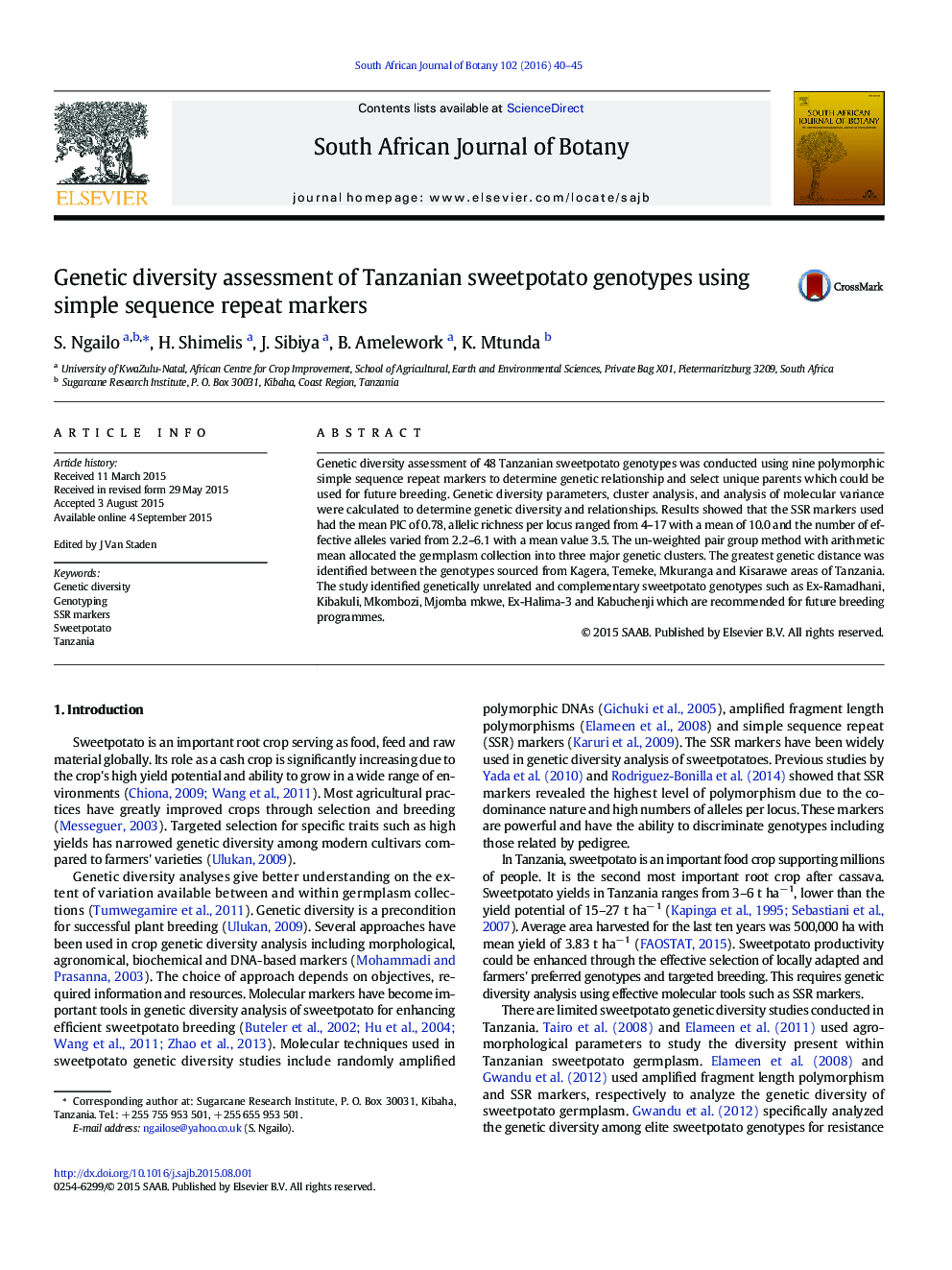| Article ID | Journal | Published Year | Pages | File Type |
|---|---|---|---|---|
| 4520145 | South African Journal of Botany | 2016 | 6 Pages |
•The SSR markers used were highly polymorphic with mean PIC of 0.78.•The UPGMA allocated the germplasm into three major clusters.•Greatest genetic distance was identified for genotypes from Kagera and Temeke.•The study identified genetically unrelated genotypes for future breeding programmes.
Genetic diversity assessment of 48 Tanzanian sweetpotato genotypes was conducted using nine polymorphic simple sequence repeat markers to determine genetic relationship and select unique parents which could be used for future breeding. Genetic diversity parameters, cluster analysis, and analysis of molecular variance were calculated to determine genetic diversity and relationships. Results showed that the SSR markers used had the mean PIC of 0.78, allelic richness per locus ranged from 4–17 with a mean of 10.0 and the number of effective alleles varied from 2.2–6.1 with a mean value 3.5. The un-weighted pair group method with arithmetic mean allocated the germplasm collection into three major genetic clusters. The greatest genetic distance was identified between the genotypes sourced from Kagera, Temeke, Mkuranga and Kisarawe areas of Tanzania. The study identified genetically unrelated and complementary sweetpotato genotypes such as Ex-Ramadhani, Kibakuli, Mkombozi, Mjomba mkwe, Ex-Halima-3 and Kabuchenji which are recommended for future breeding programmes.
